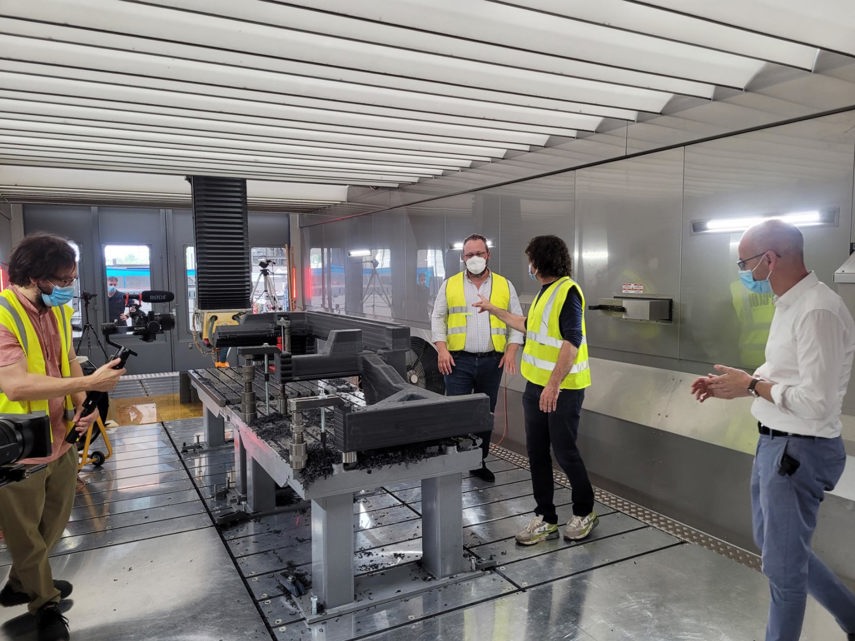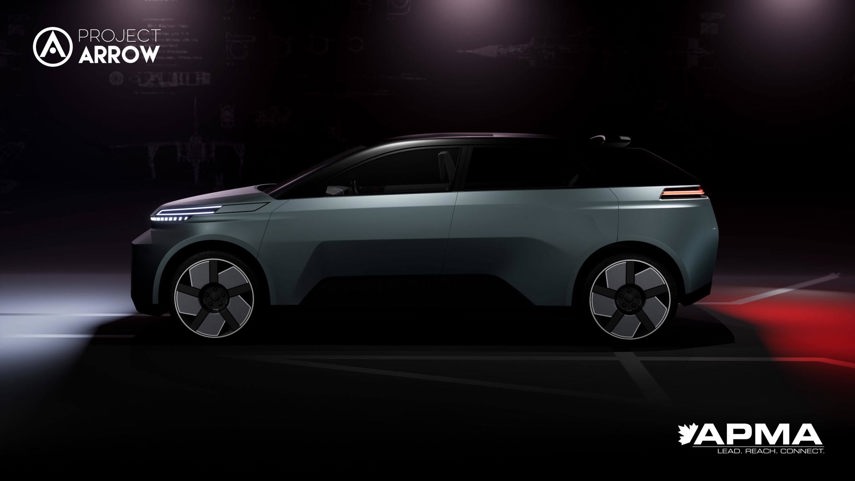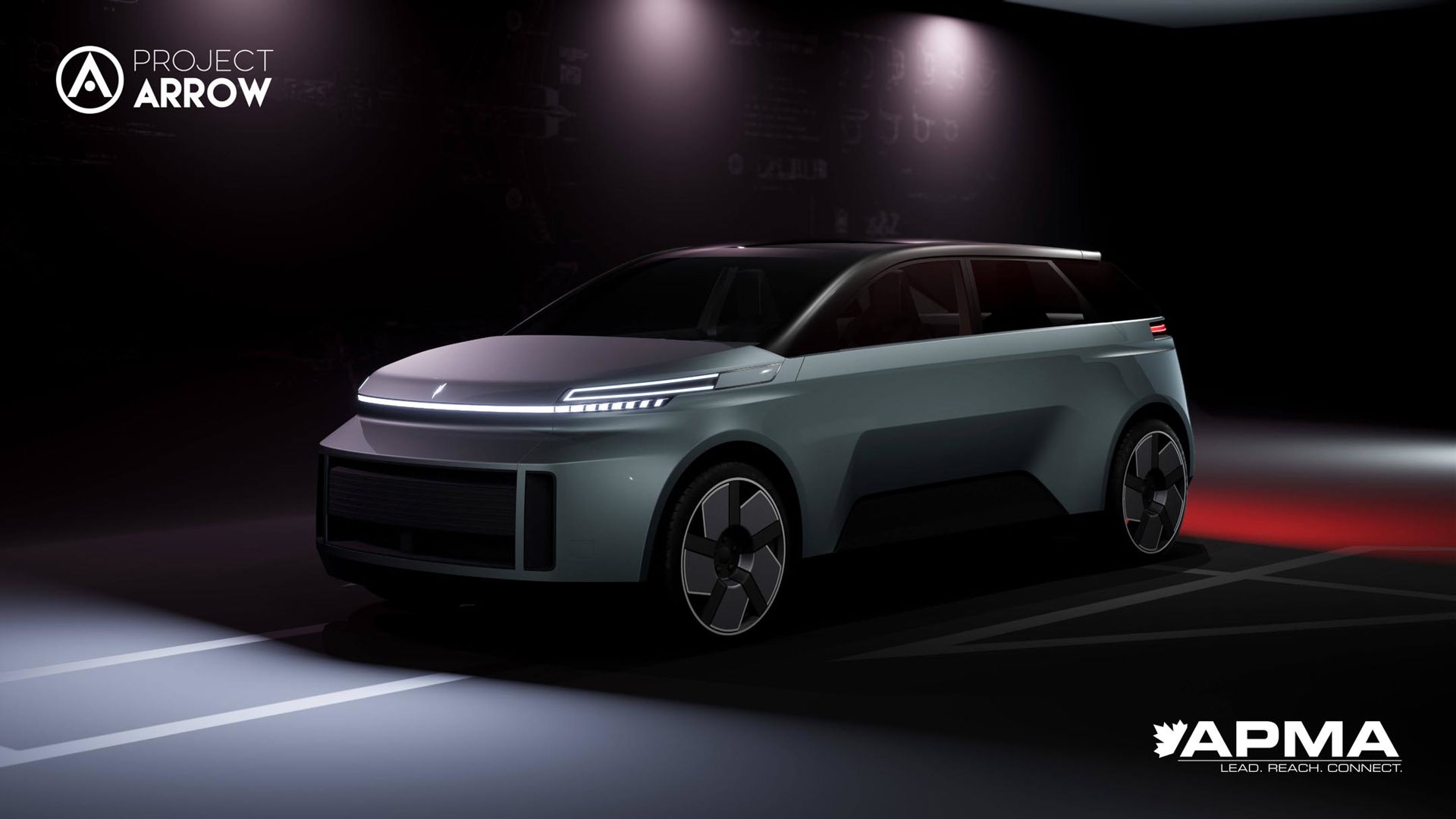An ambitious all-Canadian electric vehicle (EV) that’s taking shape in the shadows of established automakers is facing long odds of ever making it to production.
There is a good chance that parts of Project Arrow could end up in mass production, however, including the platform on which it’s based. More specifically, it’s the build process that shows the most promise, with a Toronto-based technology firm developing software it claims can efficiently and effectively 3D print the monocoque chassis for Project Arrow and beyond.
“We had to completely rethink (the process),” says Max Moruzzi, president of Xaba. “Because a (metal chassis) isn’t an innovation anymore; neither is a battery with wheels.”

That’s where his company got involved with the Automotive Parts Manufacturers’ Association (APMA), the Canadian industry association that’s the driving force behind Project Arrow. More than just an ambassador for the country’s automotive expertise, the goal of the project is to end up with a vehicle that could actually make it to market. But to do so requires innovation that will set that vehicle apart from the rest of the pack, including the foundation on which it’s built.
“We developed this completely disruptive way that one of the core components of a car, which is the body, is made using materials that are more sustainable in a process that … reduces the number of parts that are necessary,” Moruzzi says.
According to the energetic executive, the 3D-printed chassis is made up of three parts: bottom, middle, and top. As an additive manufacturing process, that means material – in this case, polymer – is gradually built up until the final product is realized.

This being a car that could potentially be driven on public roads, Project Arrow also required reinforcement. So Xaba’s team integrated fibre into the 3D printing process, as well as metal supports, to give the structure the strength it would need in the real world.
“It’s not a concept – it’s a prototype,” he says. “It could go to production, so it has to support the different load conditions.”
Beyond developing the software, the team at Xaba worked with Italian industrial equipment manufacturer Breton SpA to build a large-scale 3D printer capable of producing the chassis. Not only is it the world’s fastest large-scale 3D printer, but Moruzzi says it’s the first to run completely on artificial intelligence (AI).
But it also had to be capable of executing the process efficiently. The resulting machine consumes a claimed 33 kilowatts of energy per hour compared to the 500 to 700 kilowatts a traditional chassis production line requires.

“At the end of the day, you have a factory within a machine,” Moruzzi says.
According to Moruzzi, the cost-effectiveness of 3D printing versus stamping, casting, or moulding comes down to its adaptability. With either of the latter, entire moulds would have to be scrapped in the event of even simple changes; say, the angle or size of a window pillar. But with 3D printing, the process can be changed in real-time to great effect.
“That’s (the problem with) the cascade process,” he says of those more conventional manufacturing methods. “If you change one thing, you have to change the entire waterfall.”

With 3D printing, it’s all in the computer modelling. When it comes to Project Arrow, Moruzzi says he was able to tweak the alignment of three sections or the way the fibre was integrated before running the machine’s program.
“I don’t have moulds, I don’t have fixtures – I’m printing exactly what I want, so it’s manufacturing on-demand,” he says.
As for scale, Moruzzi says the possibilities are endless. Even hyper-localized production is possible with what he calls a distributed manufacturing process.
“At the end of the day, the future automotive factory could be even the car dealer,” he says. “With a process like this, anywhere you are, I just need to deliver the (materials) to you and you can print it.”






